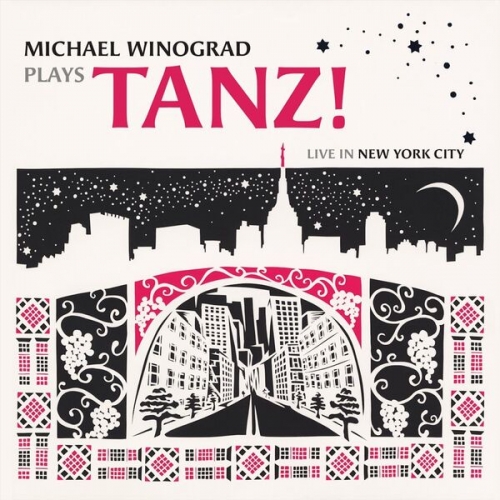J.Peter Schwalm - How We Fall (2018) [Hi-Res]

Artist: J.Peter Schwalm
Title: How We Fall
Year Of Release: 2018
Label: RareNoiseRecords
Genre: Electronic, Jazz, Experimental
Quality: 16-bit/44.1kHz FLAC; 24-bit/96kHz FLAC
Total Time: 1:07:38
Total Size: 378 Mb; 1.32 GB
WebSite: Album Preview
Jan Peter Schwalm is a German composer and music producer, best known for his collaborations with ambient music pioneer Brian Eno, including the album Drawn From Life (Opal, 2001). Since 2006 Schwalm has been a regular guest at Norway's Punktfestival, distinguishing himself as a live remixer. He has also developed a long- term partnership with Norwegian experimental guitarist Eivind Aarset and British bassist Tim Harries, both of whom appear on this album on several tracks each, together or individually.Title: How We Fall
Year Of Release: 2018
Label: RareNoiseRecords
Genre: Electronic, Jazz, Experimental
Quality: 16-bit/44.1kHz FLAC; 24-bit/96kHz FLAC
Total Time: 1:07:38
Total Size: 378 Mb; 1.32 GB
WebSite: Album Preview
The nine compositions on this album—all running for eight minutes or less—were produced in a relatively short time by Schwalm's usual standards. Together they present a cohesive ambient sound-world, while still having distinct individual identities. It is easy to hear Schwalm's creative compatibility with Eno: it would be possible to mistake this for an Eno album if listening only to brief sound samples.
"Strofort" opens the album with one of the more pulse-oriented pieces, combining a dense texture of synthesizer, mallet percussion, drums and processed guitar playing shifting rhythmic layers. "Battenfeld" is the only track with no guest performers: it finds Schwalm playing overlapping synthesizer patterns with drum accents and guitar in a continual dramatic build. "Ibra" features Harries' bass pulse and what sounds like prominent Aarset guitar textures (distinctive though his playing is, it's very hard to differentiate from the other guitar and synthesizer parts, especially after Schwalm's processing). In "Gangesthal" a long-note melody eventually emerges from a rubato accompaniment texture, and an increasingly regular drum beat.
"Stormbruch" begins like chamber jazz, piano joined by bass. Synthesizers take over for a soundscape bridge, before the piano and bass return: a classic ABA compositional form. "Clingon" surprises with what sounds like steel drum, over another irregular pulse (provided by percussion and electronics, including nature sounds). Aimless as that description might sound, there is a dramatic build that resolves into a regular drum beat. Closer "Singlis" features a guitar and bass pattern accompanying a plaintive piano melody. As always the texture includes additional soundscaping, which changes as the piece progresses. There is plenty of repetition in this music, but it is never rote.
How We Fall contains intensely personal music—Schwalm was recovering from a brain tumor during its creation—which at the same time seems to reflect the state of the world. Dark but never hopeless, a careful blend of composition and spontaneity, a timeless soundscape rich with detail.
Tracks:
1.01 - J.Peter Schwalm - Strofort (8:19)
1.02 - J.Peter Schwalm - Battenfeld (3:59)
1.03 - J.Peter Schwalm - Auua (6:09)
1.04 - J.Peter Schwalm - Ibra (6:59)
1.05 - J.Peter Schwalm - Gangesthal (5:22)
1.06 - J.Peter Schwalm - Stormbruch (7:54)
1.07 - J.Peter Schwalm - Clingon (6:23)
1.08 - J.Peter Schwalm - Musles (4:36)
1.09 - J.Peter Schwalm - Singlis (5:50)
1.10 - J.Peter Schwalm - Strofort (Bonus Version) (12:08)



![LRK Trio, Elizaveta Korneyeva and Euphoria Orchestra - LRK Orchestra (2025) [Hi-Res] LRK Trio, Elizaveta Korneyeva and Euphoria Orchestra - LRK Orchestra (2025) [Hi-Res]](https://www.dibpic.com/uploads/posts/2025-12/1766210674_qm8oj75twl1x5_600.jpg)


![Rainer Brüninghaus, Kenny Wheeler, Jon Christensen & Brynjar Hoff - Freigeweht (1981/2025) [Hi-Res] Rainer Brüninghaus, Kenny Wheeler, Jon Christensen & Brynjar Hoff - Freigeweht (1981/2025) [Hi-Res]](https://www.dibpic.com/uploads/posts/2025-12/1766402111_cover.jpg)

